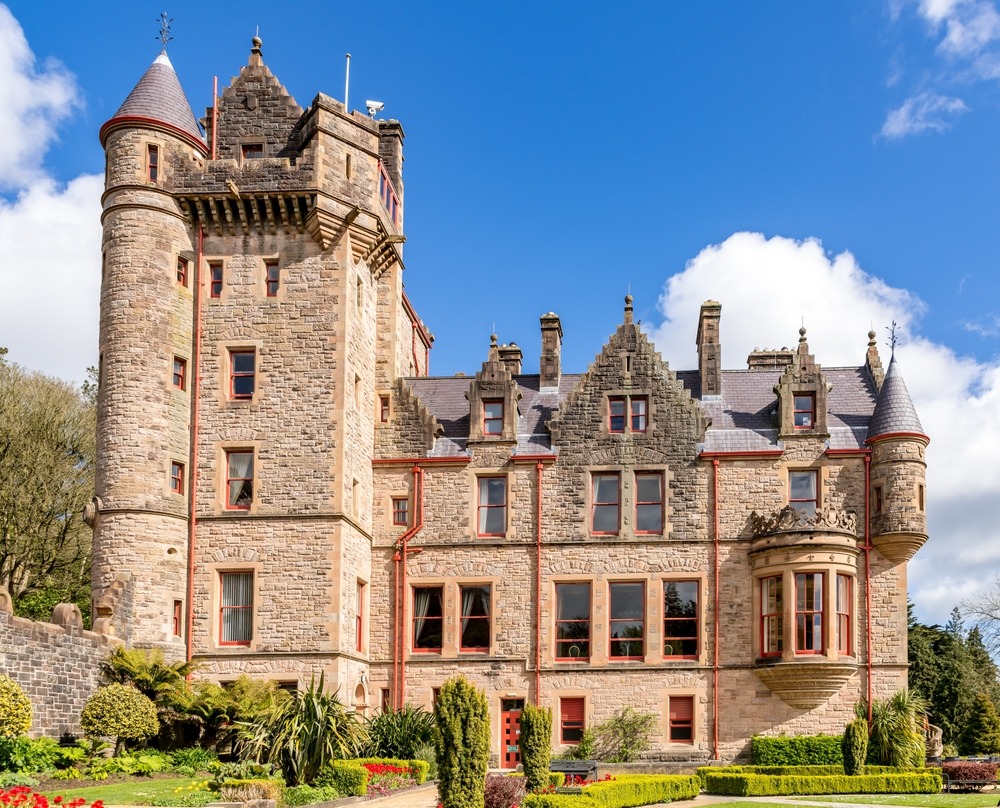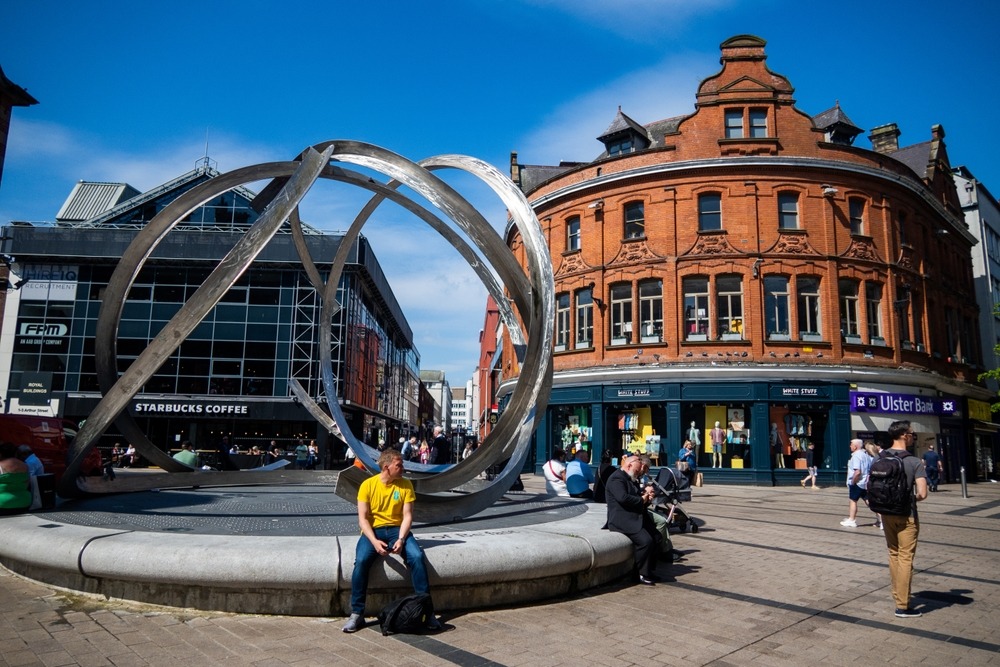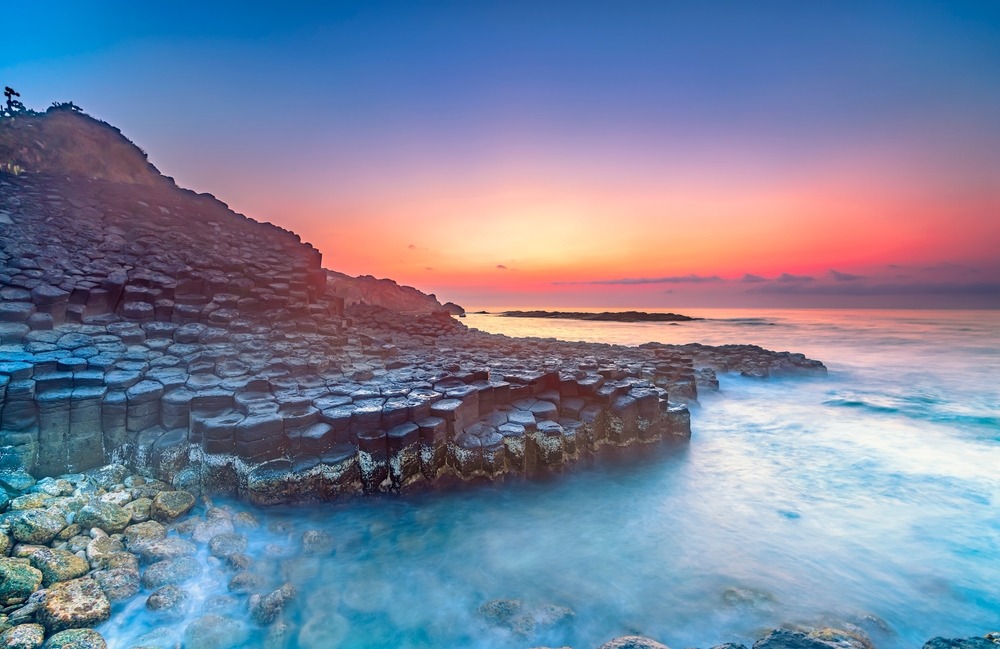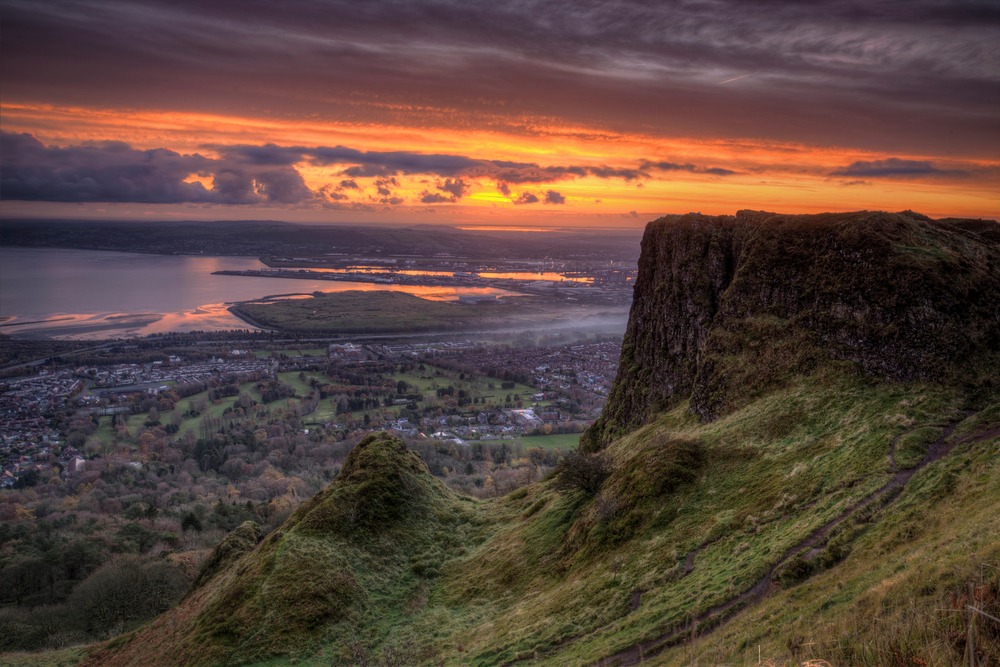History of Belfast, Ireland
Belfast, the capital of Northern Ireland, is a city of deep contrasts, remarkable resilience, and profound transformation. Set on the banks of the River Lagan and backed by the rolling Belfast Hills, the city’s history weaves through prehistoric settlement, industrial innovation, political upheaval, and cultural revival.
Early Origins and Medieval Foundations
The area surrounding modern Belfast has been inhabited since the Bronze Age, with early settlements along the Lagan estuary. The name “Belfast” is derived from the Irish “Béal Feirste”, meaning “mouth of the sandbar”—a reference to the river’s confluence and tidal flats.
In the 12th century, the Normans built a castle at the site of today’s Belfast Castle. However, Belfast remained a small settlement for centuries, overshadowed by larger towns like Carrickfergus and Downpatrick.

The Rise of the City: 17th to 19th Centuries
Belfast began to grow in the 17th century, especially after the Plantation of Ulster, when English and Scottish settlers established control over Gaelic lands. The city’s harbor and linen trade flourished, and by the 18th century, Belfast had become a center of Enlightenment thought, led by a strong Presbyterian merchant class. It was known for both industrial enterprise and radical politics, including support for Catholic emancipation and Irish independence.
In the 19th century, Belfast exploded in size and importance. The city became a powerhouse of the Industrial Revolution, known especially for shipbuilding, linen manufacturing, and engineering. Its most famous contribution came in the form of the Titanic, constructed at the Harland & Wolff shipyard, which was once the largest in the world.
Belfast officially became a city in 1888, and by the early 20th century, it was one of the most economically vital and populous urban centers in the British Isles.
Partition and the Troubles
The creation of Northern Ireland in 1921, following the partition of Ireland, made Belfast its capital. However, it also placed the city at the heart of sectarian division between Unionists (mostly Protestant, who supported remaining part of the UK) and Nationalists (mostly Catholic, who favored Irish unity).
This tension exploded into decades of violent conflict known as The Troubles (late 1960s–1998), with bombings, riots, and street warfare between paramilitary groups and British forces. Areas like Falls Road and Shankill Road became symbolic flashpoints.
The signing of the Good Friday Agreement in 1998 marked a turning point, ushering in a new era of peace and cautious reconciliation.
Belfast Today
Modern Belfast has emerged as a dynamic cultural city, known for its innovation, warm hospitality, and powerful storytelling. From the shimmering architecture of the Titanic Quarter to the street murals that honor both history and hope, Belfast is a city that remembers but also reimagines.

Top 25 Attractions in Belfast, Ireland
1. Titanic Belfast
An award-winning interactive museum built on the site of the original Harland & Wolff shipyard, telling the full story of the Titanic’s construction and legacy.
2. SS Nomadic
The last remaining White Star Line vessel and tender ship to the Titanic—beautifully restored and docked beside Titanic Belfast.
3. Belfast City Hall
A magnificent Edwardian structure at the heart of the city, offering guided tours, a memorial garden, and seasonal exhibitions.
4. St. George’s Market
One of Belfast’s oldest attractions, this Victorian-era indoor market features food stalls, artisan goods, and live music.
5. Crumlin Road Gaol
A former prison turned museum offering powerful guided tours through its cells, tunnels, execution chamber, and political history.
6. Ulster Museum
Located in the Botanic Gardens, this museum explores art, archaeology, natural history, and The Troubles—all under one roof.
7. Belfast Botanic Gardens
A lush Victorian park with exotic plants, lawns, and the iconic Palm House and Tropical Ravine glasshouses.
8. Queen’s University Belfast
Founded in 1845, this Gothic-style university features a beautiful campus and a vibrant academic and cultural scene.
9. The MAC (Metropolitan Arts Centre)
A contemporary art space offering exhibitions, theater, dance, and music in the Cathedral Quarter.
10. Cathedral Quarter
The city’s cultural heart, known for its cobblestone alleys, lively pubs, street art, and creative spirit.
11. The Peace Walls
Murals and gates that still divide Nationalist and Unionist communities—now open to walking tours that explore reconciliation and memory.
12. Falls Road Murals
Painted by Nationalist communities, these murals reflect political struggles, international solidarity, and community pride.
13. Shankill Road Murals
Unionist murals that depict historical figures, loyalty to the British Crown, and paramilitary history.
14. The Big Fish (Salmon of Knowledge)
A quirky mosaic sculpture on the Lagan waterfront, celebrating Belfast’s cultural and natural history.
15. Cave Hill Country Park & Belfast Castle
Hike to Napoleon’s Nose for panoramic views of the city and visit the fairytale-like Belfast Castle nestled on the slopes.
16. Stormont Estate and Parliament Buildings
Home to the Northern Ireland Assembly, these stately grounds are ideal for a walk and understanding modern governance.
17. The Linen Hall Library
Founded in 1788, it’s one of the oldest libraries in the city with vast collections on Irish history, politics, and literature.
18. Albert Memorial Clock
Often referred to as Belfast’s own “leaning tower,” this Gothic clock tower stands in memory of Queen Victoria’s consort.
19. Grand Opera House
An opulent Victorian theater hosting plays, opera, pantomimes, and live performances year-round.
20. Ulster Folk and Transport Museum
Located just outside the city, this open-air museum recreates traditional Irish village life and showcases vintage vehicles.
21. CS Lewis Square
A literary sculpture park celebrating the life and works of Belfast-born author C.S. Lewis, with statues from The Chronicles of Narnia.
22. HMS Caroline
A World War I-era battleship permanently docked in the Titanic Quarter, offering immersive naval history experiences.
23. Victoria Square & Dome
Belfast’s premier shopping center featuring a glass-domed viewing platform overlooking the city skyline.
24. Ormeau Park
Belfast’s oldest municipal park, ideal for running, tennis, and festivals in a leafy riverside setting.
25. Black Taxi Political Tours
Take a guided ride through the city’s neighborhoods and history with local drivers who lived through The Troubles—raw, honest, and unforgettable.

Conclusion
Belfast is a city where past and present collide, creating a rich tapestry of industrial heritage, cultural rebirth, and political transformation. From the Titanic’s mighty beginnings to murals that whisper the complexities of war and peace, Belfast invites visitors to listen, learn, and engage. Whether you’re strolling through leafy gardens, sipping pints in historic pubs, or reflecting at a peace wall, you’ll discover a city that is resilient, welcoming, and deeply human.


































